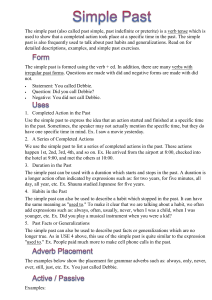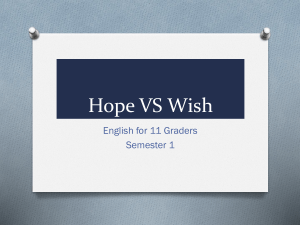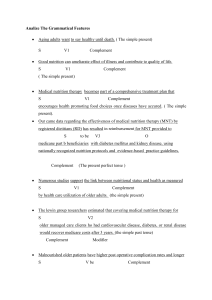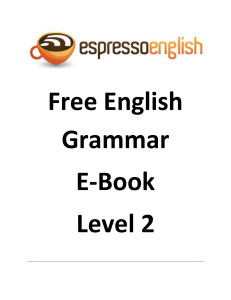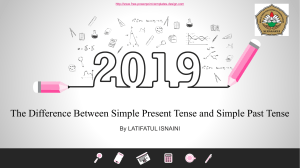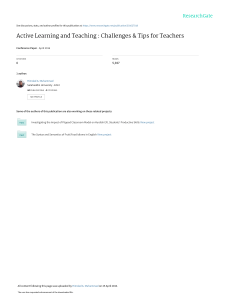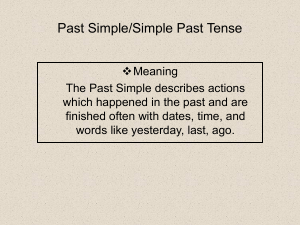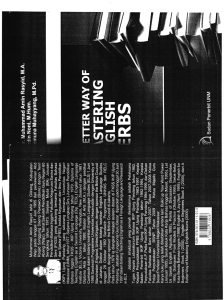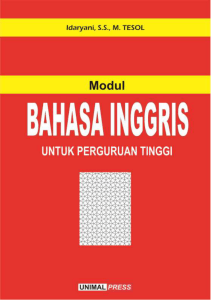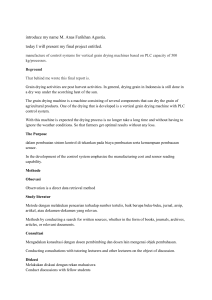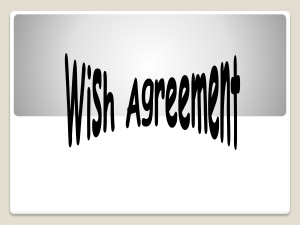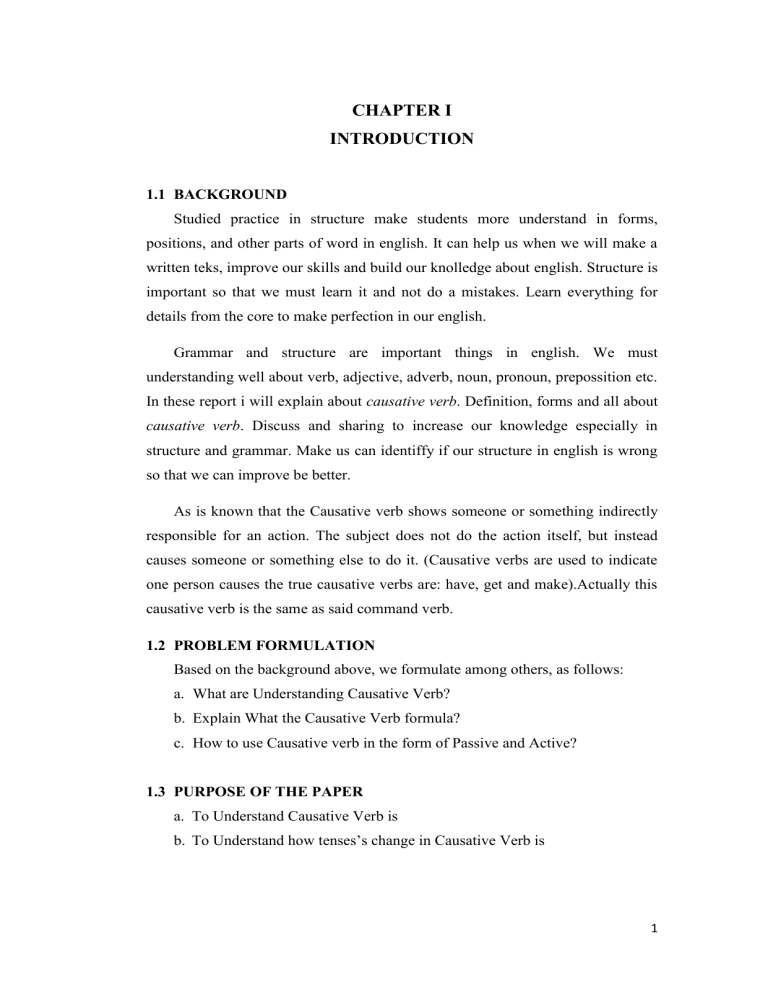
CHAPTER I INTRODUCTION 1.1 BACKGROUND Studied practice in structure make students more understand in forms, positions, and other parts of word in english. It can help us when we will make a written teks, improve our skills and build our knolledge about english. Structure is important so that we must learn it and not do a mistakes. Learn everything for details from the core to make perfection in our english. Grammar and structure are important things in english. We must understanding well about verb, adjective, adverb, noun, pronoun, prepossition etc. In these report i will explain about causative verb. Definition, forms and all about causative verb. Discuss and sharing to increase our knowledge especially in structure and grammar. Make us can identiffy if our structure in english is wrong so that we can improve be better. As is known that the Causative verb shows someone or something indirectly responsible for an action. The subject does not do the action itself, but instead causes someone or something else to do it. (Causative verbs are used to indicate one person causes the true causative verbs are: have, get and make).Actually this causative verb is the same as said command verb. 1.2 PROBLEM FORMULATION Based on the background above, we formulate among others, as follows: a. What are Understanding Causative Verb? b. Explain What the Causative Verb formula? c. How to use Causative verb in the form of Passive and Active? 1.3 PURPOSE OF THE PAPER a. To Understand Causative Verb is b. To Understand how tenses’s change in Causative Verb is 1 CHAPTER II DISCUSSION 2.1 DEFINITION CAUSATIVE VERB Causative verbs are verbs that are used to indicate that the subject is not directly responsible for the action that occurred but someone or something else who did the action.Causative verbs (have, get, make, force, let, allow, permit, help, cause, enable, require, etc.) are used to express that subject sentences cause object sentences to do an action (active form) or cause object sentences to be subject to a action (passive form). In active form, action is carried out by object sentences. Causative verbs are used to indicate that one person causes a second person to do something for the first person. The causative are : - Have Menyuruh, meminta, - Get Menyebabkan, memaksa, - Make Membuat 2.2 CAUSATIVE VERB FORMULA Sentences Causative Verbs are divided into 2 types, namely active and passive. In the phrase active causative verbs, the agent working on the action is known. Conversely, in the sentence passive causative verbs, the agent is usually not mentioned. The functions and formulas in general are as follows: 2 Verb Fungsi Rumus Active & Passive Causative Let Membiarkan seseorang Active: melakukan sesuatu. S+let+agent+action verb(bare infinitive)+… Make Memaksa atau sangat Have Get Active: menyakinkan seseorang untuk S+(make-made)+agent+action melakukan sesuatu. verb(bare infinitive)+… Memberikan wewenang kepada Active: seseorang untuk melakukan S+(have-had)+agent+action sesuatu; verb(bareinfinitive)+object ingin sesuatu dilakukan oleh Passive: seseorang; S+(have-had)+object+action pengalaman. verb(V-3) Membujuk seseorang untuk Active: melakukan sesuatu. S+(get-got)+agent+action verb(to infinitive)+… Passive: S+(got)+object+action verb(V3) 2.3 CAUSATIVE VERB IN ACTIVE ANN PASSIVE STRUCTURES The Example Causative Verb In the Active and passive structure, among others, are: Rumus Verbs Contoh Causative Verbs Active have-had Lala had her friend take her result test. Causative The student had the teacher speakslowly. Verbs get-got She got her parents to buy her a tennis racket. The boy got his cat to chase a mouse. 3 make- The woman made her daughter eat up the made tomatoes. The manager makes her staff workhard. Let My father lets me choose my own future carrier. The shepherd lets his sheep graze in the meadow. Passive have-had I had my house renovated last week. Causative He had his book returned as soon as Verbs possible. get-got Teddy got the money saved in the bank. Yulia got her bedroom cleaned. 2.4 HAVE/GET(Active) a. The Pattern Get (Active) S + get + object (complement) + verb to invinitive (any tense) (usually person) (to + V1) Examples : 1. Marry gets John to wash the car (simple present) 2. Marry got John to wash the car (past tense) 3. Marry is getting John to wash the car (present continuous) b. The Pattern Have (Active) S + have + object (complement) + verb (any tense) (usually person) (V1) Examples : 1. I had my friend repair my handphone (past tense). 2. I have my friend repair my handphone (simple present). 3. I am getting my friend repair my handphone (present continuous). 4 2.5 HAVE/GET (PASSIVE) a. The Pattern Have and Get Passive S + Have/Get + Object (complement) + verb in pastparticiple (any tense) (usually thing) (V3) Examples : 1. James has/get his shirts cleaned at the drycleaners. 2. Pat is having/is getting her car repaired this week. 3. Anna had/got her paper typed by a friend. 2.6 MAKE (ONLY FOR ACTIVE) Make → can be followed only by a clause in the active voice. It is stronger than have or get. It means force. a. The Pattern Make/Force S + Make + object(complement) + verb in simple form (any tense) V1 S + Force + object (complement) + verb in Infinitive (any tense) (to + V1) Examples : 1. The teacher always makes the children stay in their class. 2. The teacher always forces the children to stay in their class. 3. The manager made the salesmen attend the conference. 4. The manager forced the salesmen to attend the conference. 5. The president is making his cabinet members sign this document. 6. The president is forcing his cabinet members to sign this document. 5 2.7 LET Let →→ is not actually causative, it means allow or permit (mengizinkan/membiarkan) a. The Pattern Let/Permit/Allow S + Let + Object (complement) + Verb in simple form (any tense) V1 S + Permit + Object (complement) + Verb in infinitive (any tense) (to + V1) Examples : 1. John let his daughter swim with her best friend. 2. John permitted/allowed his daughter to swim with her best friend. 3. Dr. Jones is letting the students hand in the papers. 4. Dr. Jones is permitting/allowed the students to hand in the papers. 2.8 HELP Help →→ is not actually causative, it means assist (membantu) a. The Pattern Of Help S + Help + Object (complement) + Verb 1 / Verb to Invinitive (any tense) (V1 / to infi) Examples : 1. John helped Mary wash dishes. 2. The teacher helped Andri find the research materials. 6 CHAPTER III CONCLUSION 3.1 CONCLUSION Causative Verbs are used to indicate that one person causes another person to do something for them. Causative verbs are verbs that are used to indicate that the subject is not directly responsible for the action that occurred but someone or something else who did the action 3.2 SUGGEST In Causative Verb we should be inclined to inclusion with matters relating to causative verb can make us. 7 REFERENCE Alwasilah, A.Chaedar, Kaji Ulang Bahasa Inggris,Bandung: Angkasa, 1993. Drs. Nur Akhlis. 1993. LET’S STUDY ENGLISH, BEC Pare Kediri. Thomson, A. J. and A.V. Martinet. 2003. A Practical English Grammar, Oxford University Press. 8
